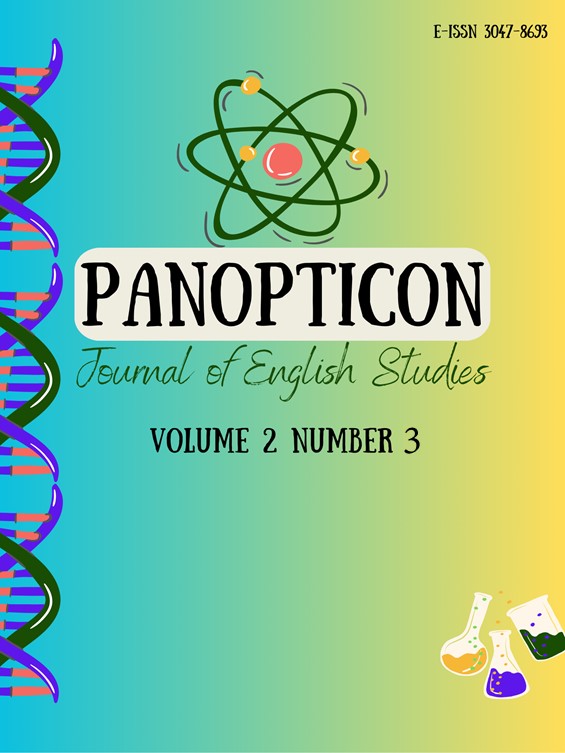Narrative Analysis of Beauty Standards in Korea: A Study of Sienna Hong's YouTube Content
Keywords:
Beauty standards, narrative analysis, narrative elements, Sienna Hong, YouTubeAbstract
This study explores the perspectives and personal experiences of Sienna Hong, a YouTube content creator, on the societal beauty standards prevalent in South Korea. It offers valuable insights into the complex dynamics surrounding these standards and their broader societal implications. Through qualitative data analysis, this research employs Seymour Chatman’s (1978) narrative theory to examine the narrative components that bring these issues to light. The findings reveal an engaging portrayal of Sienna Hong's storytelling, which skillfully balances casual and formal language styles, enhancing the appeal and relatability of her content. This study highlights the importance of narrative elements in digital storytelling, particularly within the context of YouTube vlogs.
References
Buf, D. M., & Ștefăniță, O. (2020). Uses and gratifications of YouTube: A comparative analysis of users and content creators. Romanian Journal of Communication and Public Relations, 22(2), 75-89.
Burgess, J., & Green, J. (2018). YouTube: Online Video and Participatory Culture. Polity Press.
Castillo-Abdul, B., Romero-Rodríguez, L. M., & Balseca, J. (2021). Hola followers! Content analysis of YouTube channels of female fashion influencers in Spain and Ecuador. Sage Open, 11(4), 21582440211056609.
Chan, T. (2024). Savoring stereotypes: Exploring orientalized narratives through American reactions to East Asian foods on YouTube (Doctoral dissertation, Purdue University Graduate School).
Foley, N. M., O'Mahony, M., Lehane, E. A., Cil, T., & Corrigan, M. A. (2015). A qualitative content analysis of breast cancer narratives hosted through the medium of social media.
Holliday, R., & Elfving-Hwang, J. (2012). Gender, globalization and aesthetic surgery in South Korea. Body & Society, 18(2), 58-81. https://doi.org/10.1177/1357034X12440828
Kennedy, U. (2019). Becoming on YouTube: Exploring the automedial identities and narratives of Australian mummy vlogging.
Labov, W. (2016). Narrative pre-construction. In B. Johnstone (Ed.), Labov: On narrative pre-construction (pp. 15-30). University of Bern. Retrieved from https://www.morrissey.unibe.ch/lecture/05_Johnstone_2016_On_Labov.pdf
Li, J., & Zhang, Y. (2020). Influencers as cultural intermediaries: The role of social media influencers in shaping cultural consumption. Journal of Consumer Culture, 20(4), 29-49. https://doi.org/10.1177/1469540518822048
PAGTALUNAN, P. A. H., BORJA, N. L., HERNANDEZ, J. U., & ESPLANADA, D. E. (2022). A content analysis on Siargao island from the perspective of YouTube vloggers. Quantum Journal of Social Sciences and Humanities, 3(4), 83-99.
Polletta, F. (2006). It Was Like a Fever: Storytelling in Protest and Politics. University of Chicago Press.
Riessman, C. K. (2008). Narrative Methods for the Human Sciences. Sage Publications.
Vlahović, A., Ercegovac, I., & Tankosić, M. (2023). Unraveling the Narrative Structures in YouTube Vlogs: A Qualitative Content Analysis. Media Studies and Applied Ethics, 4(2), 25-42.
Downloads
Published
How to Cite
Issue
Section
License
Copyright (c) 2024 PANOPTICON: Journal of English Studies

This work is licensed under a Creative Commons Attribution 4.0 International License.


